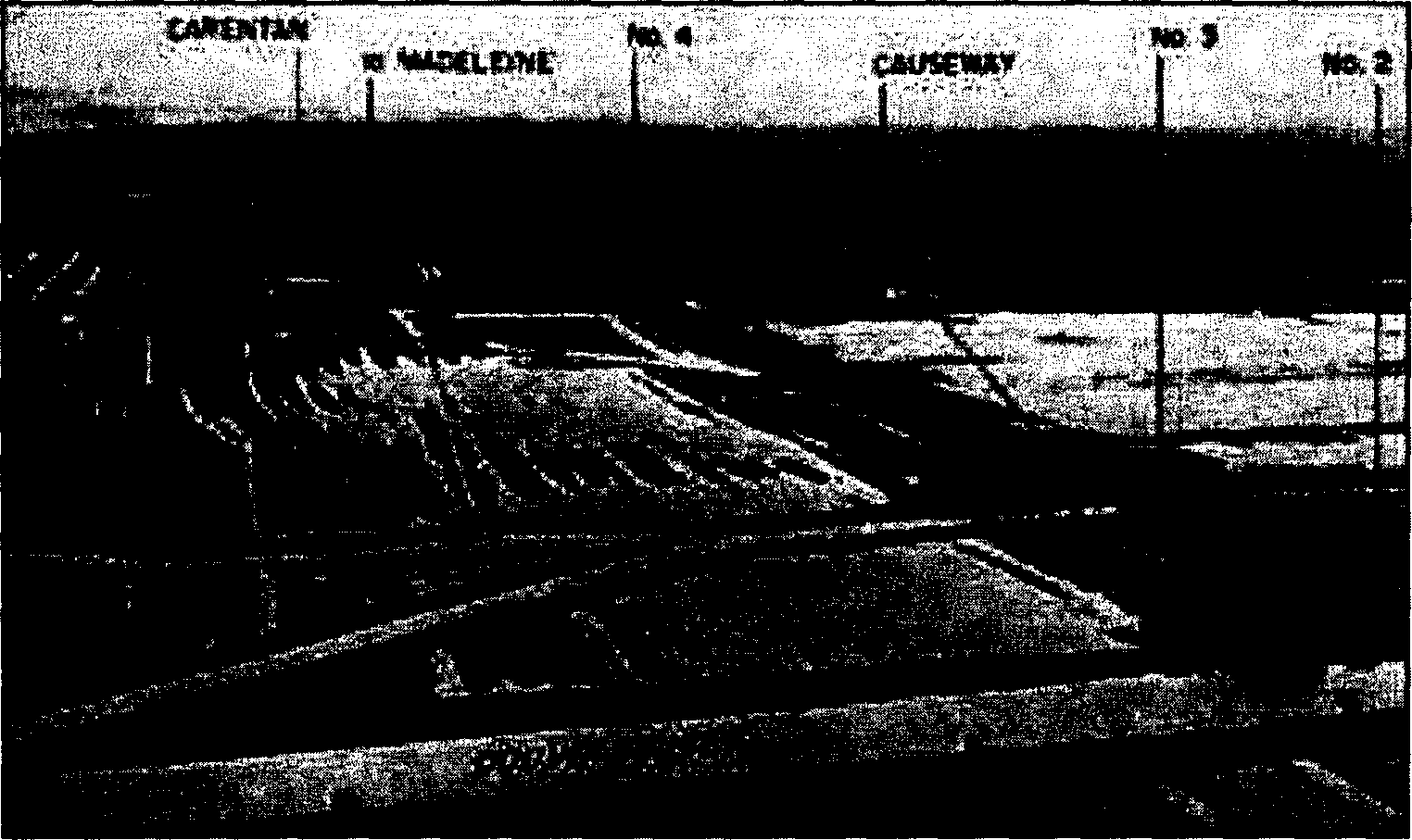Cotentin Peninsula Air Assault Zones
Paratroopers from the United States' 82nd and 101st Airborne Divisions were night-dropped onto the right flank of the Normandy Invasion area with the aim of helping to isolate the battlefield for the seaborne invasion force that was to land on the beaches at dawn. The airdrop was part of the overall scheme of the Normandy Invasion, but it was particularly related to the assault at nearby Utah Beach.
The drop zones for the 101st Division were labelled "A," "C," and "D" and were in the vicinity of roads leading from the Utah beaches. Drop zone "A" was to the west of Saint-Martin-de-Varreville, while "D" and "C" were west and southwest of Sainte Marie de Mont. Drop zones for the 82nd Division were labeled "N," "0," and "T"; they were positioned north of the Douve River and on either side of its principal tributary, the Merderet--all to the west of Sainte-Mere-Eglise.
Aerial photograph of an inundated zone on the Cotentin Peninsula south of Sainte-Mere-Eglise. Paratroopers of the U.S. 101st Airborne Division, in crossing the Madeleine River and moving toward Carentan, would be restricted to the main highway (shown as the "Causeway" in the photograph). In this exposed position they could be raked by German machine-gun fire.
The drop zones for the 101st Division were labeled "A," "C," and "D" and were in the vicinity of roads leading from the Utah beaches. Drop zone "A" was to the west of Saint-Martin-de-Varreville, while "D" and "C" were west and southwest of Sainte Marie de Mont. Drop zones for the 82nd Division were labeled "N," "0," and "T"; they were positioned north of the Douve River and on either side of its principal tributary, the Merderet--all to the west of Sainte-Mere-Eglise.
German forces in the Cotentin capable of countering the airborne divisions were two regiments from the 91st Division (including one battalion of tanks), and the 6th Parachute Regiment. The main defence of the Cotentin, however, was natural: the flooding of lowlands and marshes, as controlled by a lock near the mouth of the Douve River at La Barquette, just north of Carentan. The commander of German forces in Normandy, Field Marshal Erwin Rommel, had ordered the locks at La
